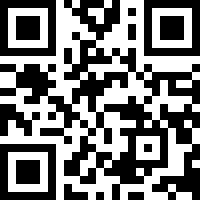When counterfeit drugs infiltrate the supply chain, only criminals benefit. Companies invest a lot of money and effort fighting counterfeit drugs, which may result in increased consumer costs.
Moreover, the catastrophic effects of consuming counterfeit medicine are widely recognized as a threat to the integrity of public health systems worldwide, as well as a hazard to our own health and welfare. Despite regulatory agencies’ best efforts, the issue of counterfeit drugs has remained.
What is a counterfeit medicine?
Fake drugs are classified into two types: those that imitate genuine medicines and those that make misleading claims about their components. Counterfeit or fake medicine may contain the incorrect or no dose of medicine, as well as deadly or harmful chemicals. Counterfeit medications are dangerous. They are frequently disguised to look like the real thing. Other health products, such as medical devices, mosquito nets, vaccines, and bug sprays, may also be counterfeit.
A counterfeit drug may have:
- no active ingredient
- sub-standard ingredients
- undeclared ingredients
- illegal or dangerous ingredients
- wrong dosage (too much, too little)
- contaminants from unsanitary manufacturer
Counterfeiting can occur with both branded and less priced generic medications. In fact, generic drugs are occasionally confused with counterfeit medications, which may constitute a barrier to generic medication’s widespread use and adoption.
How to spot a fake medicine
The simplest approach to identify a counterfeit drug is to compare it to an authentic one. Due to the precision with which medicines are created, any change in size, weight, color, quality, or embossing may indicate a fake one.
When you take a counterfeit medicine, you may also experience an “odd” sensation, such as an unanticipated reaction. Additionally, you may observe package variations. Occasionally, it is more visible, such as misspellings in the medication’s name. Let’s take a look at some other ways to spot a fake medicine.
- Visual inspection. Visual inspection, as stated by the World Health Organization (WHO), continues to be the initial step in spotting probable counterfeit drugs, regardless of the analytical method utilized. This is because such observation can assist in identifying counterfeit items even when the physical qualities of a real drug product are unknown.
Visual inspection of the packaging
1. Inspect the package and determine whether it is odd or different from what you are used to.
2. Inspect the security seal for fractures or tears in the sealing tape and seals to determine if it has been tampered with.
3. Keep an eye out for odd fonts, font sizes, print color, and typographical errors.
4. Check whether the information on both the major and secondary packages is legible.
5. Verify that the secondary package’s batch number, expiration date, and manufacturer’s address match those on the first package.
6. Verify that the manufacturer’s address is traceable, that is, that it includes the company’s precise location, not just the country address.
Visual inspection of the dosage
a. Examine the drug’s physical appearance (uniformity of color, size, shape, and consistency, for example). According to the WHO, common physical defects in tablets include the following:
· Excessive powder and/or fragments of tablets at the bottom of the container (from abraded, crushed, or broken tablets);
· Cracks or chips in the tablets, swelling, mottling, discoloration, or fusion of tablets;
· Appearance of crystal on the container’s walls or on the tablet.
· Capsule shell hardening or softening, cracking, swelling, mottling, or discoloration should also be observed.
b. Additionally, if you have been using the medication, verify the organoleptic features of the dose form.
2. Pricing. This is another method of determining whether a product is counterfeit. If the price is significantly less than expected, you should take precautions. However, this is not always the case particularly with certain products (fake innovator/generic brands) that may be sold at the same price as the genuine.
3. Unexpected side effects. Counterfeit medications frequently contain inert ingredients in addition to the authorized Active Pharmaceutical Ingredient (API). Moreover, they may contain ineffective substances, inappropriate dosage, or toxic compounds that have no therapeutic effect. Unusual side effects, allergic reactions, or a worsening of a medical condition following the use of a medication may indicate the presence of a counterfeit drug. Once any of the aforementioned are observed, the drug should be discontinued.
4. Source. The source of the drug indicates whether or not you are purchasing a counterfeit one. Filling your prescription at a reputable pharmacy significantly reduces your risk of purchasing counterfeit drugs, whereas purchasing from unqualified vendors peddling medicines anywhere significantly increases your risk of purchasing counterfeit drugs.
RELATED ARTICLE: Product Authentication Approaches: Physical Features, Tracing, Cryptography
Anticounterfeiting Technologies
Pharmaceutical businesses employ a variety of anticounterfeiting systems to ensure the original product is distributed from the manufacturing site to the pharmacy. Holograms, color-shifting inks, and embedded codes, pictures, and dyes are only a few of the technologies used by pharmaceutical producers. These anticounterfeiting characteristics enable pharmacists to identify potentially counterfeit drugs.
RELATED ARTICLE: Blockchain: Anti-Counterfeit Technology in Pharmaceutical Industry
The Next-Gen Anticounterfeiting and Authentication
Counterfeit items can be detected before they reach the consumer with the use of IDLogiq’s patented NFC security technology. Products may be tracked at every stage of the supply chain by integrating its technology at the factory level. At every point along the supply chain, the product can be scanned and authenticated to identify whether it is genuine or counterfeit, as well as whether it is in the correct supply channel. This enables entities to intercept counterfeit goods before they reach the end user, which is incredibly effective in combating counterfeiters.
Visit IDlogic to learn more about the most advanced anti-counterfeiting solutions.
About IDLogiq
IDLogiq is made up of a team of deeply committed, with multidisciplinary professionals, which includes healthcare specialists, DSCSA and supply chain experts, advanced security technologists, and more. The team comes together to create a technological and trusted solution to supply chain. IDLogiq’s core mission of helping enterprises combat against counterfeiting all over the world to resolve $1.8 Trillion and 1 million lives lost per year and counting.
IDLogiq team envisions a world free of counterfeit drugs and a global environment working together to optimize business efficiency, maximize business intelligence via the application of our state-of-the-art IDLogiq technology.


